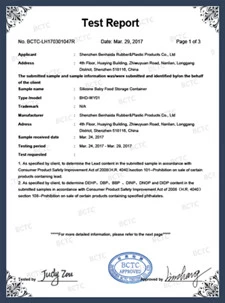5 projects in LNG to watch in 2019 - part 1
Global demand for natural gas is expected to grow in the next 5 years, according to the International Energy Agency (IEA). This growth will be mainly fuelled by China. A significant part of this demand will be fulfilled by LNG coming from North-America, Qatar, and Russia. In terms of project development, the US will be leading the pack.
Currently, natural gas takes up a rather insignificant part of China’s energy mix. It accounts for 6%, far below the world average of 24% (source: Paulson Institute). This percentage, however, is bound to rise. Over the last two decades, natural gas consumption has already risen strongly: from just 47 billion cubic meters (bcm) in 2005 to over 200 bcm in 2016. This growth is expected to accelerate in the coming years, according to IEA. Demand is forecast to grow by 60% between 2017-2023, mainly driven by government policies to reduce local air pollution by switching from coal to gas. Just to put this demand growth into perspective, China alone will account for 37% of the growth in global demand in the next five years. The country will also overtake Japan and will become the largest natural gas importer by 2019. The IEA also forecasts strong growth in gas use in other parts of Asia, including in South and Southeast Asia, driven by strong economic growth and efforts to improve air quality.

Prominent role for industry
China driving global gas demand is one of the three major trends in natural gas, IEA states. The other two are the rise of industrial demand (compared with power generation) and the rise of the United States as a global supplier. First of all, the role of the industry. This mainly applies to China where gas demand is more spread over various (industry) sectors. In other economies, power generation and residential consumption are more dominant due to having a history in gas exploitation and subsequent domestic use for the above purposes. According to IEA, the industrial sector - mainly in Asia’s emerging economies - will take the lead from power generation as the main driver. Gas will be increasingly used as a fuel for industrial processes as well as for feedstock for chemicals and fertilizers. Industrial gas demand also grows in major producing regions in more established markets, such as North America and the Middle East, to support the expansion of their petrochemicals sectors.

Shale gas revolution
Coming back to China and its projected natural gas consumption mix. China National Petroleum Corporation, China’s largest integrated energy company, expects residential consumption to double and power consumption to triple by 2030, together accounting for 43% of demand. Apart from the above usage, LNG is also used in the Chinese trucking sector as a ‘cleaner’ alternative for diesel. The third driving force is the United States dominant role as supplier/exporter of natural gas (LNG). This dominance has been cemented by the ‘shale gas revolution’, while shale gas accounting for almost 2/3 of the nation’s output and revolutionizing the energy sector in terms of pricing and a significant reduction in CO2-emissions, compared to coal. The United States, already the world’s top producer, accounts for almost 45% of the growth in global production and nearly 3/4 of LNG export growth.
Apart from the United States, Australia and the Russian Federation are the main contributors to export growth. Russia is expected to step up its LNG export, taken in account its investments in LNG exploitation and liquefaction in the Arctic North (see the Project report on Yamal and Gydan by Novatek and Total, see pages 23 and 24). As for the market share in the global LNG trade, Qatar tops the list with 27,6% (IHS Markit, 2017), followed by Australia and Malaysia. The increase in demand and supply has led to an increase in terms of project development across the globe. As mentioned before, Russia has invested and is likely to invest more in natural gas exploitation and liquefaction in Siberia. Given its dominant position in production and export growth, it’s no surprise that the USA dominates project development with major LNG export projects coming online in 2019. Meanwhile, a so-called second wave of LNG export projects is pending. Ultimately, this step-up in liquefaction capacity will propel the US forward as an exporting nation, challenging Qatar’s position as a global export leader.

 +86 512 68781993
+86 512 68781993 


















